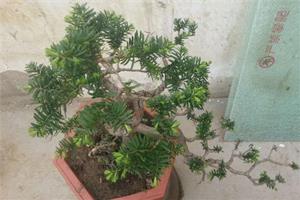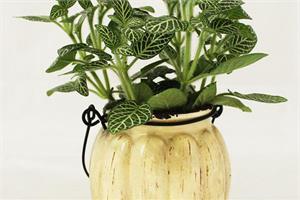Ten key points of breeding, ten skills of sowing and raising seedlings
The ten greatest achievements are a kind of plant. It's actually a kind of treasure. The roots of its stems and trees can be made into medicine, and the medicine is not bad. Obviously, you can rely on appearance, but you have to rely on strength. Today, let's learn how to breed it. Owners who want to breed it, come and have a look, don't miss it.
The best propagation time is from February to March, and the ramet can be carried out from mid-October to mid-November or from late February to late March, or combined with changing pots in spring.
The best growth soil: the soil requirement is not strict, and it grows best on the loose, fertile and well-drained sandy loam.
Growth humidity requirements: the top ten efforts had better be raised in a humid place.
The best growth temperature is 15 ~ 25 °C for sowing and 25 ~ 30 °C for planting.
The best growth light: ten great efforts to withstand shade and avoid scorching sun exposure.
Matters needing attention for the top ten credits of breeding:
To apply fertilizer:
If you pour rotten cake fertilizer or livestock manure once a year before winter, you can grow healthily. In the growing season, mature thin liquid fertilizer is applied every 20 days, topdressing 2-3 times a year, and proper amount of cake fertilizer in early spring. If potted, the pot soil should be kept moist without stagnant water. Move to a sunny place indoors in winter, and the temperature should not be too high. The management of land planting plants is relatively extensive, which can be transplanted with soil balls before sprouting in early spring, and sufficient base fertilizer should be applied when planting. The growth of 1-2-year-old seedlings was slow, and began to accelerate in the third year.
Watering essentials:
Ten great efforts to wet, usually to frequently watering, to keep the basin soil moist state, but also should not be waterlogged. Generally, more watering can be done in spring and summer to facilitate sprouting and sprouting; in summer, watering morning and evening, and spraying foliar water to make the leaves wet through; in winter, watering should be done around noon, avoid watering before late, so as not to frostbite the root system.
Pruning essentials:
Ten great efforts can prune withered branches and leaves and tidy up the shape of the tree before it germinates in spring. Usually can be pruned at any time, cut off the sprouting branches and overdense branches, in order to maintain a certain tree shape.
Replacement of basin soil:
The ten great achievements are usually turned once every two or three years, and can be propagated in combination with ramets when the basin is turned, and at the same time, the withered roots and some overlong old roots can be cut off, and the old 1B2 soil can be replaced to cultivate new culture soil which is loose and rich in humus.

The second illustration of the top ten achievements
Main points of reproduction:
Ten great achievements are commonly used in sowing, cutting, ramet, and rapid propagation.
Sowing and raising seedlings
The top ten efforts in the wild are getting less and less, and this method is used to propagate a large number of seedlings in the garden nursery. The ten major achievements in sowing and raising seedlings are mainly to grasp the time of seed collection, the method of seed treatment, the thickness of sowing cover and the careful management after sowing. In May, when the fruit is ripe, the oval berries can be picked, slightly stacked, mixed with fine sand, rubbed, or soaked in warm water to rinse off the peel, pulp and empty seeds, then remove the full seeds, dry and put them in a cloth bag, hang them in a cool and ventilated dry place for storage, store the seeds in low temperature sand to the following spring after winter, sow in March, cover the soil with 1-2cm after sowing, sow in half-shade after soaking water, and germinate for about a month. It can also be sowed directly after the completion of seed treatment, sowed in a semi-shady environment, sowed in the seedbed and covered with soil 3~5cm. The optimum temperature for seed germination is 15-25 ℃, and the seeds can germinate and emerge in about 50 days. The seedbed should be flat, the soil grains should be finely broken, and ditches should be opened to sow seeds. In the same year, the height of seedlings can generally reach 8~10cm, a little cold protection during the overwintering period, leaving the bed for another year, the second year can be extended transplanting. Seedlings usually take 4-5 years to blossom and bear fruit.
Barge in
A small amount of reproduction can be done by the method of insertion. Hardwood cuttings should be carried out from February to March and semi-hardwood branches from May to June. Cut 1-2-year-old strong branches, cut off the ear segments that grow about 15cm, and insert them into the sandy soil seedbed to keep the seedbed moist. In May, they began to build a shed for shade, spray every sunny day, and rooting after sowing for about 2 months. Shoot cuttings can be carried out in the rainy season, select the branches that have been enriched in the same year, or use one-year-old branches to grow 15~20cm, the seedbed temperature can be controlled at 25: 30 ℃, it can take root after one month, and the survival rate can reach more than 90%. When the branches are treated with rooting agent, the rooting rate can reach more than 90%.
Ramet
Ramet can be carried out from mid-October to mid-November or from late February to late March, or combined with changing pots in spring. Dig up the clump-like plants of the ground, or remove the large clump of potted plants from the flowerpot, cut or tear them from the weak combination of the rhizome, with 2-3 stems and a part of intact roots in each clump, and plant or pot the leaves slightly after pruning the leaves.
Rapid propagation
With the expansion of the production scale of proprietary Chinese medicine, the demand for the top ten plants is increasing day by day, and the wild one is facing a serious shortage of resources. The top ten merit usually uses asexual reproduction, so the rapid propagation of the top ten by means of biotechnology and the realization of large-scale production will be an effective way to solve this contradiction, which has a certain reference value for the study of artificial reproduction of the top ten meritories. it will provide a basic theoretical basis for the rapid propagation of the top ten.
Pest control:
The top ten credits have a strong ability to resist diseases and insect pests, and they were not infected when other species tested at the same time, such as photinia, were harmed by aphids. It is necessary to drain the ditch in time, reduce the humidity in the field, maintain ventilation and light, and enhance the disease resistance of the plant. The main diseases and insect pests are: withered leaf armyworm, coir moth, anthracnose, spot disease and so on. Spodoptera litura and Spodoptera litura were sprayed with 1000 times of trichlorfon. Anthracnose can be sprayed with 1000 times of thiophanate methyl wettable powder. The scale insects were sprayed with dichlorvos, phoxim and other pesticides. Remove diseased leaves and burn them. Spray Bordeaux liquid or chlorothalonil during the onset period.
Expand knowledge-the value of the top ten credits:
The ten leaves are unique in shape, elegant and beautiful, and potted plants can be used for indoor furnishing. because of their good shade tolerance, they can be cultivated under indoor scattered light for a long time. It can also be planted on the side of the rockery or in the cracks in the rocks in the courtyard, but it is best to have a big tree for shade. The ten greatest achievements are cool in nature and sweet in taste. The root and stem are cold and bitter. It contains berberine, yam root, magnolia and so on. It has the effect of clearing heat and detoxification, relieving cough and resolving phlegm. It has inhibitory effect on Staphylococcus aureus, dysentery bacillus and coliform bacteria. Main treatment of bacillary dysentery, gastroenteritis, infectious hepatitis, bronchitis, sore throat, conjunctivitis, burns, scald and other diseases. At the end of autumn, fruits are picked, roots are dug, leaves are picked throughout the year, and dried or dried.
If you want to know more about it, you can continue to follow the No.1 Home Network.
It contains berberine, yam root, magnolia and so on. It has the effect of clearing heat and detoxification, relieving cough and resolving phlegm. It has inhibitory effect on Staphylococcus aureus, dysentery bacillus and coliform bacteria. Main treatment of bacillary dysentery, gastroenteritis, infectious hepatitis, bronchitis, sore throat, conjunctivitis, burns, scald and other diseases. At the end of autumn, fruits are picked, roots are dug, leaves are picked throughout the year, and dried or dried.
If you want to know more about it, you can continue to follow the No.1 Home Network.
Related
- Wuhan Hospital Iron Tree Blooming Result Was Instantly Frightened by the Gardener Master
- Which variety of camellia is the most fragrant and best? Which one do you like best?
- What is the small blue coat, the breeding methods and matters needing attention of the succulent plant
- Dormancy time and maintenance management of succulent plants during dormancy
- Minas succulent how to raise, Minas succulent plant pictures
- What are the varieties of winter succulent plants
- How to raise succulent plants in twelve rolls? let's take a look at some experience of breeding twelve rolls.
- Attention should be paid to water control for succulent plants during dormant period (winter and summer)
- Watering experience of twelve rolls of succulent plants
- Techniques for fertilizing succulent plants. An article will let you know how to fertilize succulent plants.



